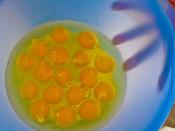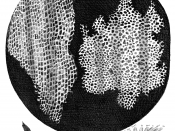Since Galileo began using a rudimentary compound microscope in 1609, whole new ranges of objects not known to even exist were discovered from that basic piece of technology. The microscope played the key role in discovering cells, and as it advanced with technology, so too did the cell theory.
In 1665, scientist Robert Hooke used a microscope to look at slices of cork. He noticed that the cork was divided up into hundreds of tiny little compartments that he named cells. Hooke was the first person to acknowledge cells, and this was when the cell theory began.
In 1758 a spectacle manufacturer John Dollard, patented an almost completely achromatic lens that made colour-free refracting telescopes possible. Later on in 1821 Giovan Battista Amici attempted to increase the resolution of the microscope, and invented the oil immersion techniques that brought microscopes to their greatest resolution, allowing far more detailed scientific work to progress.
A French microscopist Henri Dutrochet in 1824, proposed that all organisms are made of cells. There was general support of this theory in the scientific community, as experiments undertaken seemed to point towards this. However, a lot of people still believed in spontaneous generation.
It wasn't until 1864 that Louis Pasteur dispelled the theory of spontaneous generation through an experiment with microbes on dust particles becoming lodged in swan necked flasks. Air entered the flask but no microbes grew in the boiled broth inside the flasks. Pasteur developed heat sterilisation techniques and used the most powerful sort of compound microscope of the day to look at the bacteria. Although difficult to see, Pasteur could see that they were multiplying. His discovery was important in disproving the spontaneous generation theory of cells, in which cells were created out of nothing.
In 1831 a British botanist Robert Brown noticed what...


